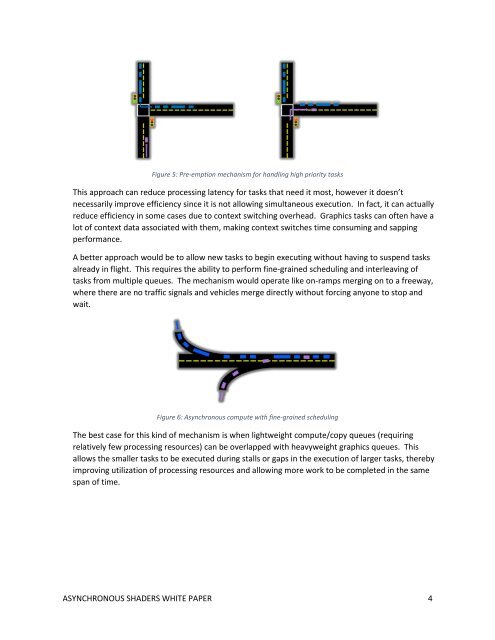Asynchronous-Shaders-White-Paper-FINAL
Asynchronous-Shaders-White-Paper-FINAL
Asynchronous-Shaders-White-Paper-FINAL
Create successful ePaper yourself
Turn your PDF publications into a flip-book with our unique Google optimized e-Paper software.
Figure 5: Pre-emption mechanism for handling high priority tasksThis approach can reduce processing latency for tasks that need it most, however it doesn’tnecessarily improve efficiency since it is not allowing simultaneous execution. In fact, it can actuallyreduce efficiency in some cases due to context switching overhead. Graphics tasks can often have alot of context data associated with them, making context switches time consuming and sappingperformance.A better approach would be to allow new tasks to begin executing without having to suspend tasksalready in flight. This requires the ability to perform fine-grained scheduling and interleaving oftasks from multiple queues. The mechanism would operate like on-ramps merging on to a freeway,where there are no traffic signals and vehicles merge directly without forcing anyone to stop andwait.Figure 6: <strong>Asynchronous</strong> compute with fine-grained schedulingThe best case for this kind of mechanism is when lightweight compute/copy queues (requiringrelatively few processing resources) can be overlapped with heavyweight graphics queues. Thisallows the smaller tasks to be executed during stalls or gaps in the execution of larger tasks, therebyimproving utilization of processing resources and allowing more work to be completed in the samespan of time.ASYNCHRONOUS SHADERS WHITE PAPER 4


